Visiting Kathmandu three months after the earthquake by Duncan Chessell
Aug 26, 2015
The plane circles the runway for an extra 30 minutes as a mild 5.1 scale tremor occurred just prior to touch down – the runway has to be inspected prior to landing. As the wheels touch down, the runway sounds rougher – probably due to minor cracks under the weight of the large emergency relief cargo planes. Or more likely I am just imagining it.
Driving through the suburbs at night I can’t help but think how normal everything looks: electricity on, houses quiet and by the look of it buildings and dwellings all standing. The next day I spend the day in the Kathmandu valley walking and riding around to get a feel for what the earthquake has affected. I am quite surprised at lack of obvious damage in the majority of the city and can’t help but think the damage could have been much, much worse. The tourist centre, Thamel, is operating as normal.
The 3-4-5 storey buildings of reinforced concrete slab and pillars that have overgrown the city and swallowed up the vegetable gardens and crops of the Kathmandu valley over the last 20 years seem to have withstood the earthquakes' assaults. The larger, heavier houses with that extra 4th story and heavy-looking walls often show buckling and cracking on the lower pillars as it’s fairly common to add one more layer than the design. The lighter 2.5 storey high houses have mostly escaped unscathed.
As I travel around the city there are pockets of extreme damage, a series of houses in a row have fallen over. The older the building, the more significant the damage. The odd large reinforced concrete building leans over on a neighbouring building or for some reason has crumbled leaving a gap in the skyline. Poor construction quality is the likely cause, or the underlying foundations were insufficient.
As I travel through older parts of the city to Durbar Square, it becomes obvious that an enormous cultural loss has been inflicted on the planet. The ancient temples have been severely damaged and in many cases reduced to piles of splinters and stone shards. Many temples survive only at the whim of a strong breeze. Long wooded poles and hastily positioned scaffolding are all that hold up the teetering walls that are part of the World Heritage Cultural Site.
As I venture further into the more rural parts of the valley the concrete construction gives way to more traditional dry stone walls, many of which have collapsed or are severely cracked. There are still a few small clusters of half a dozen or so families living under tarpaulins in various locations on the fringe of the valley, but the scenes I had imagined of hundreds of thousands of people in living in open fields with nothing left of the city but a pile of rubble were very, very far from the truth. Many people still have tents set up in their garden alongside their houses, which they used during the period when the aftershocks were almost a constant occurrence and sleep was impossible.

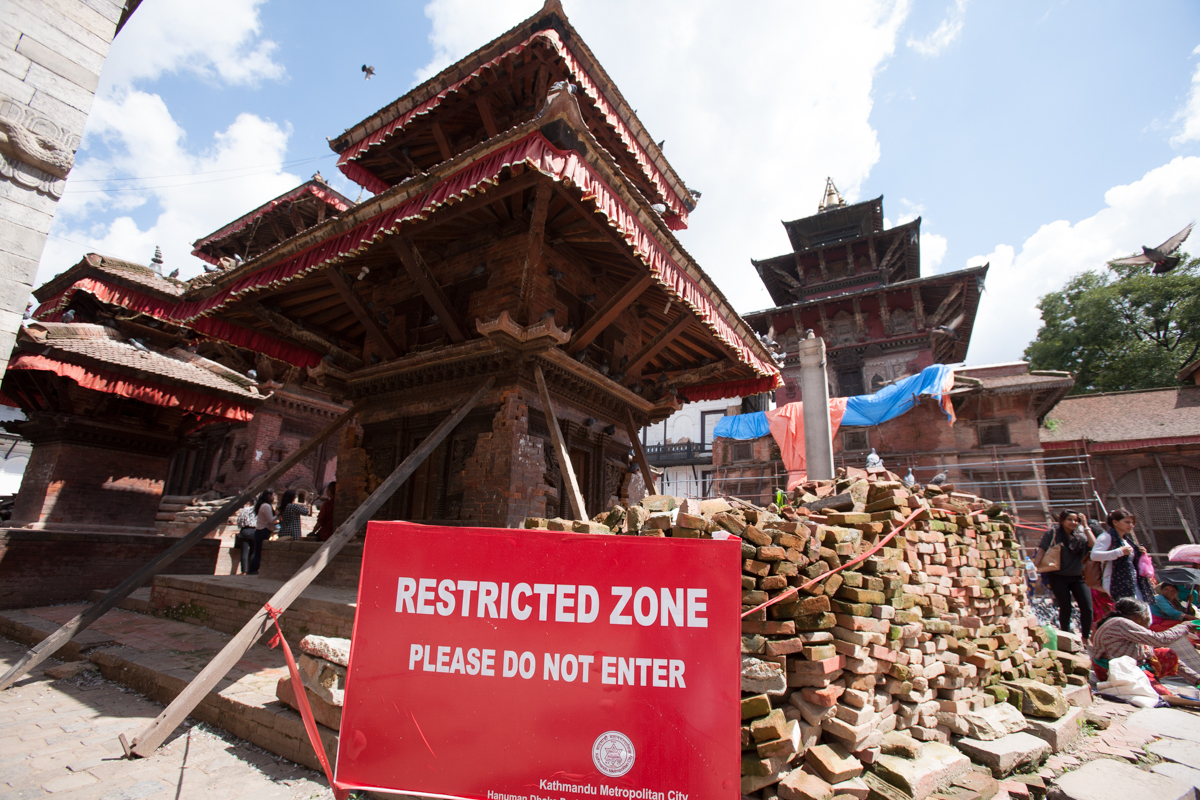
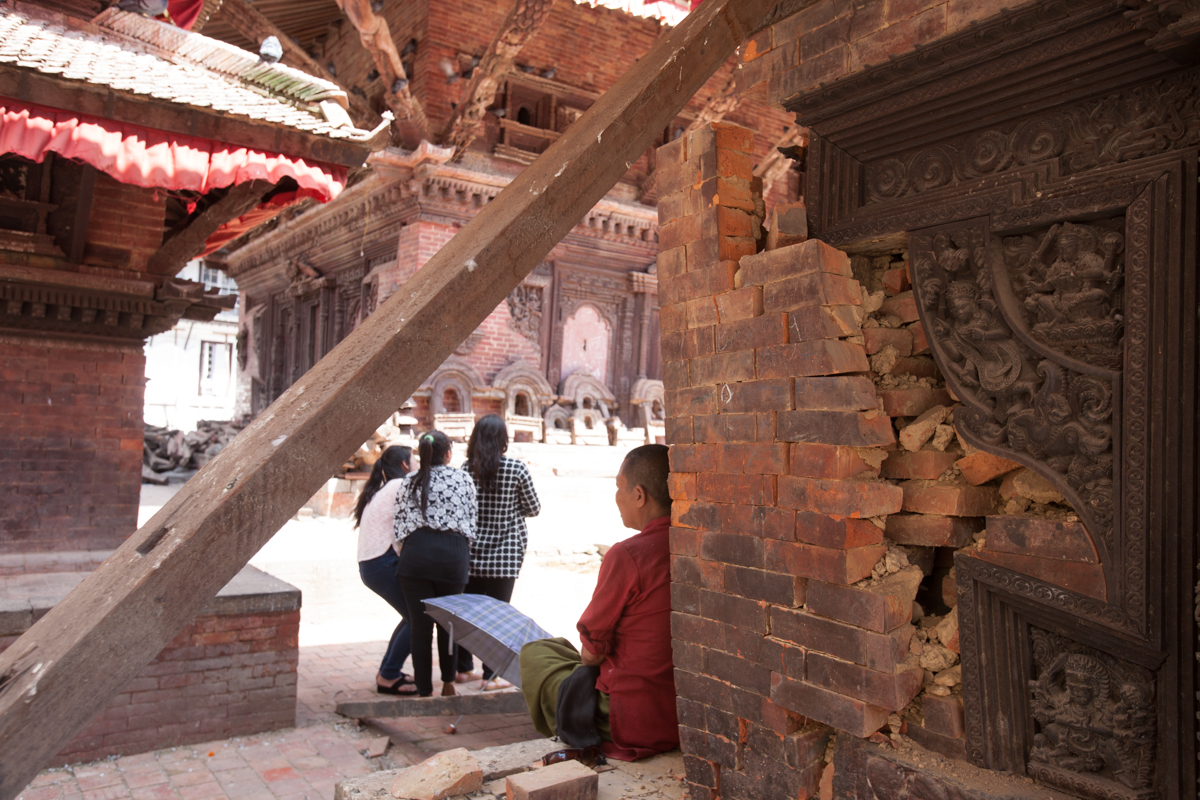
After a few days in Kathmandu I head out with Jiban Kharki, the founding Chairman of Phase Nepal, and Rudra Neupane, also a Director, both of whom are Civil Engineers. Together we dissect building collapse – in many cases corners had been cut on the diameter of reinforcing steel rods or column dimensions. It is most informative and highlighted the value of a building code.
Phase Nepal is one of HDFA’s partner NGO organisations. Our destination is the Thumpakhar VDC in Sindhupalchowk district, some 2-3 hours’ drive from Kathmandu. This is one of the areas HDFA’s emergency funds had been distributed in the form of tarpaulins, blankets, food and medical aid in the days after the earthquake.
As we drive up over the valley rim damage is fairly limited. Then as we cross into a new drainage system every house that remained “standing” looks like it has been used for target practice on an artillery firing range for a few years. House after house, flattened. Tarpaulin towns, village schools – all under canvas of many different colours. The “hills” here in are up to 2,000m high and small villages dot the landscape in all directions, identifiable by various-coloured tarpaulins.
A few single story reinforced concrete houses have withstood the violent brunt of the Magnitude 7.8 earthquake, but 2, 3 and 4 storey houses did not. Those concrete structures that remain “standing” are often damaged badly with a combination of poor position or construction practices being their undoing. The monsoon regrowth is so rapid in places that ruins are now becoming overgrown and already look as though they belong to a distant memory.
The thing that strikes me, that I had not expected, was the number of people suffering obvious mental trauma, many people seem dazed, unable perhaps to grasp how to carry on in face of such overwhelming devastation. Months of after-shocks. Monsoon rain. For many, the houses they had grown up in and lived in all their lives, their very foundation had turned to rubble. This huge load has taken its toll on many.
The children seem to adapt more easily and are happily playing around the edges of their shanty-towns, many attending school in (TLC) Temporary Learning Centres that foreign aid organisations have been able to provide.
Given that government aid for schools is extremely uncertain and if it does come will take years and is likely to be too little too late, these TLC’s are crucial to provide that stop-gap whilst schools can be repaired and rebuilt. Terrible thoughts cross my mind as we drive past village after village of people living under canvas. As economic and food needs become harder to achieve, people will be come more and more desperate to feed themselves. People smugglers are already targeting poorer areas to purchase children for as little as USD$500 per child to be sold on the black market into India and the Middle East. To think that parents would become so desperate as to sell their children was very saddening. To wonder if any of the children we saw out the car window that day would suffer such a fate threw a darker shadow over an already dark scene. The Kathmandu Times had reports of arrests made in relation to people smuggling of Nepalese children.
As we wind our way down into yet another deep valley and cross another bridge before climbing up to the Thumpakhar area it is amazing to think of how many areas in Nepal have been affected like this. We were in just one district (Sindhupalchowk), and 29 districts have reported damage. In this district alone there were 204 schools, educating 24,000 students in 1,780 classrooms. Only 11 classrooms are undamaged, the rest require rebuilding or repair for an expected cost of $10M.
We visit numerous schools. We meet the headmasters and talk to the teachers and students as we walk through the ruins of where the classrooms used to be. Understanding the issues they face is a great lesson in resilience Nepal style. The way they are just getting on with running a class, despite the poor conditions, overcrowding, tarpaulin roof and bamboo doors is amazing to see. But it is obvious that something needs to be done quickly before these shelters perish in the weather.
Towards the end of our field visit we stop at a modest farmhouse, which initially from the distance looks OK. On closer inspection it is significantly cracked. Walking around the house, it becomes obvious that only the facade (the front wall) is still standing – the rest has crumbled away. Jiban points out his (destroyed) bedroom where he grew up as a child. We walk over to a rough corrugated iron shed, which his father occupies now with bits and pieces of furniture pulled from the rubble of the house. His father had built the house with his own hands decades ago and knew only this place as his home. Now elderly, and surrounded in rubble, he is too old to rebuild it himself or to afford to pay others to do so. He stares out the window of his new shed house at the clouds and rain, in silence.
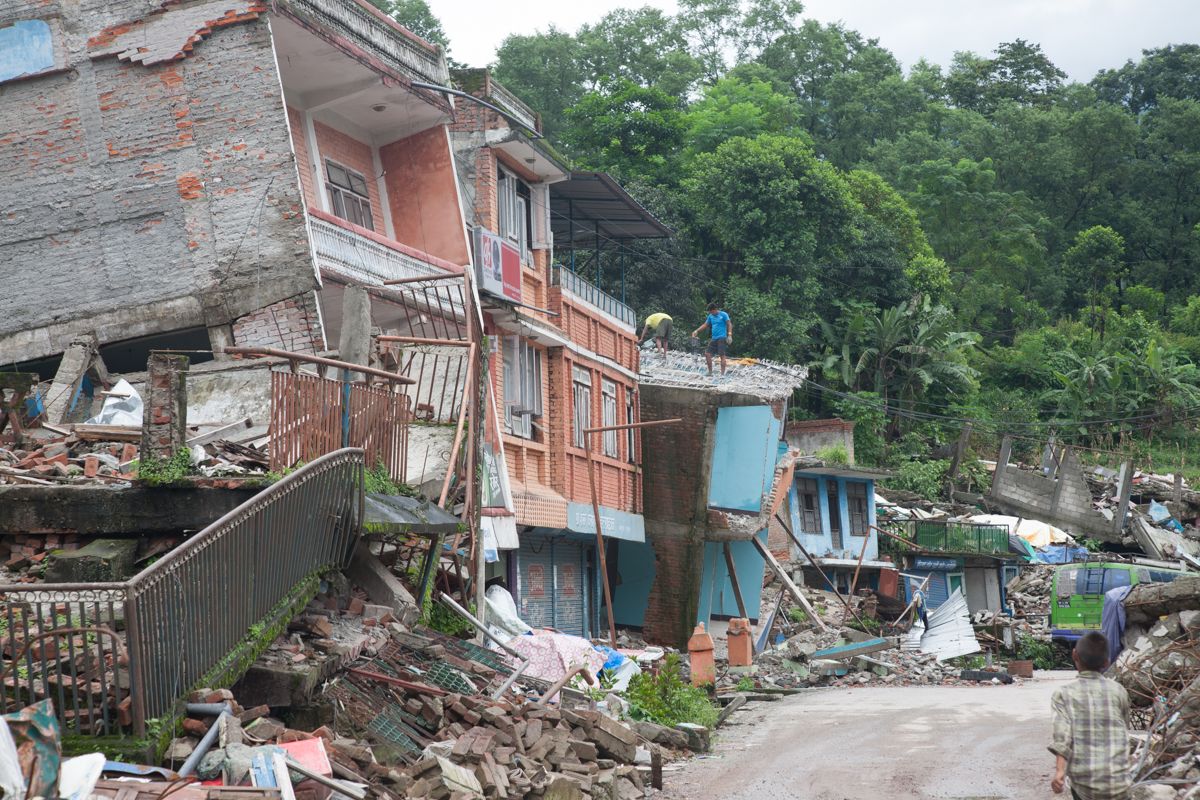
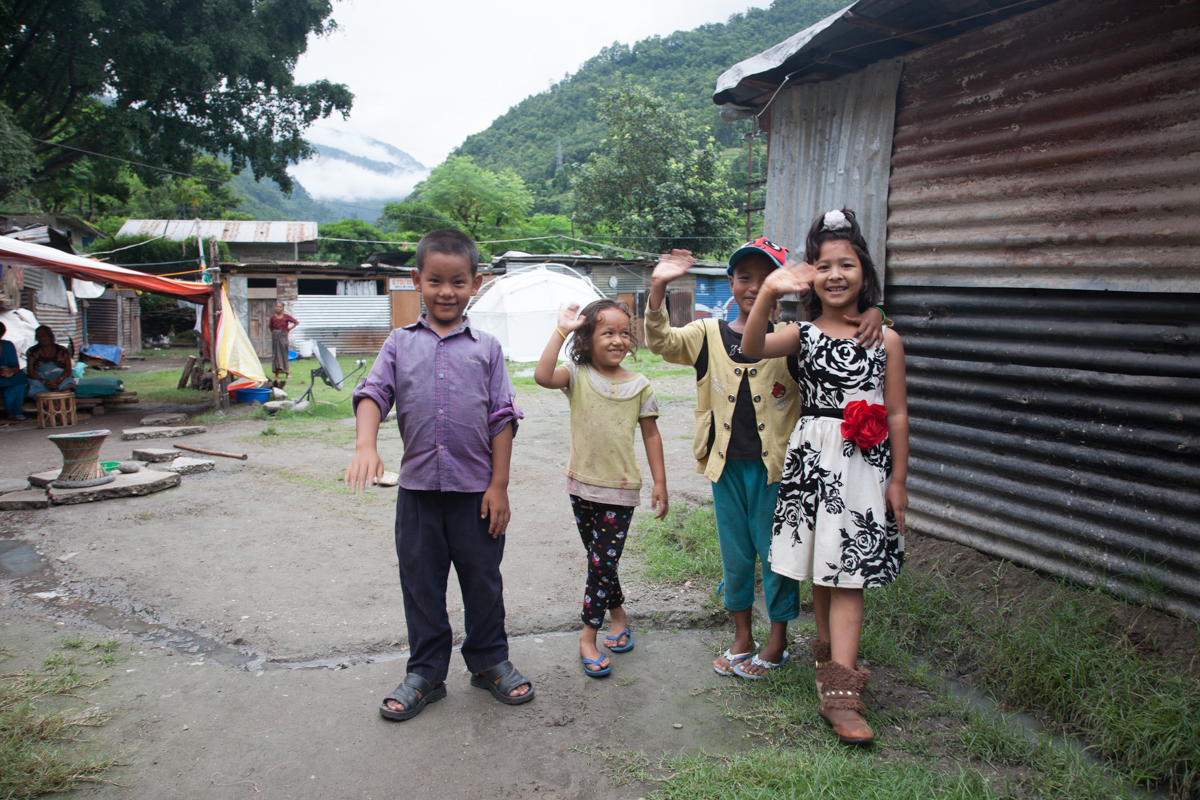

Back in Kathmandu talks turn to what will the government “do” what will the World Development Bank do, how will all this money pledged actually get to the kids and rebuild their classrooms, is the scale of managing such a task beyond the capacity of the government, which is challenged in good times to bring its people out of poverty. It seems there is a real need for small foundations to get in at the ground level with communities, to help them deliver rebuilt or repaired educational infrastructure. Now, before we wait for the government, which could take years. Because, in the meantime, the education and future of a generation of children is at risk.
Instead of being overwhelmed at the enormity of the task, it becomes obvious we can help a few communities directly and effectively. Jiban and Rudra’s idea was to provide the metal trusses and pillars to schools for the rebuilding and let them do the walls themselves later as community. This concept of providing a roof and foundations to many schools rather than rebuild just one complete school seems sensible as a first round. During our visits it was obvious the steel truss roof and pillar structures with cross bracing were lighter and stronger and very earthquake resistant. Cheaper dry stone walls had broken easily and killed people inside. Reinforced concrete structures had allowed people to run outside and did not collapse immediately but they sustained significant damage and would need demolishing and rebuilding. We can help to Build Back Better.
We had also visited a lower caste (Dalit) school that had been totally wiped out. Their temporary learning centre was rudimentary at best – obviously a lower caste student school got the leftovers in terms of aid as well. We discuss that this school probably needs a stronger helping hand than some of the others, but every school faces significant issues.
For those of you who have already donated, thank you. 25% of funds collected by our Himalayan Development Foundation Australia’s Disaster Relief Fund have already been distributed as immediate aid. The remainder, and what we can raise in in our ongoing efforts, will go into rebuilding schools and some basic education courses for rebuilding and repairing housing in our Build Back Better (BBB) theme.
Now the HDFA’s role is to continue to raise funds and, especially, to connect people and organisations in Australia to the communities we can help to rebuild in Nepal – in one of the hardest hit areas, Sindhupalchowk District.
Story in pictures see gallery.
Duncan Chessell
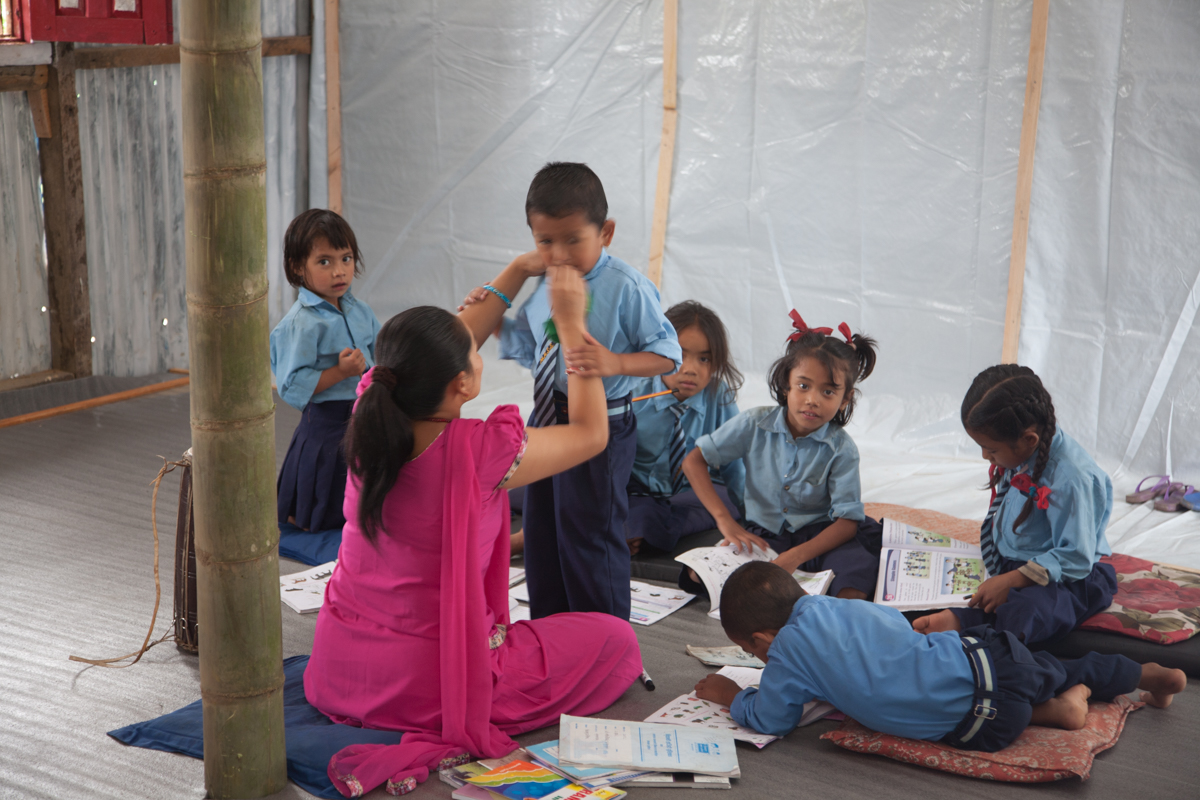
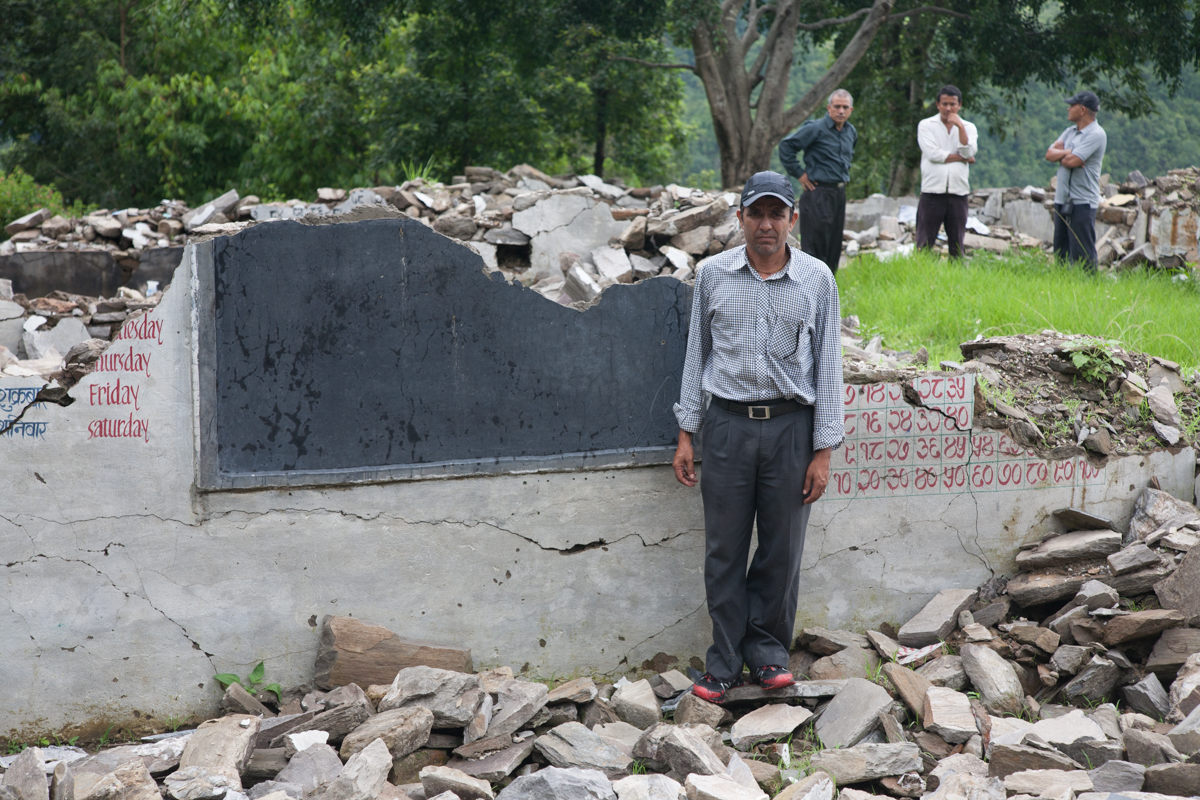

All News Articles











